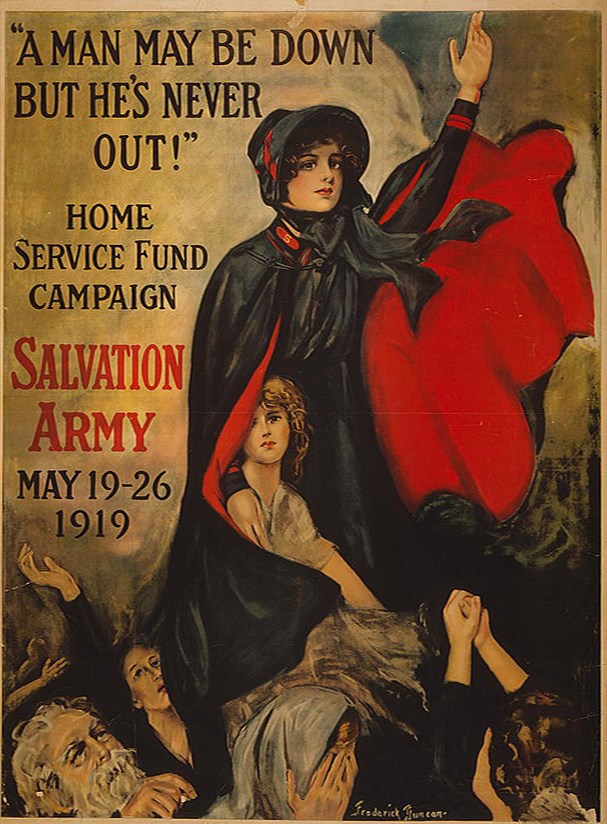Last updated: January 29, 2018
Article
Advancements in Medical Care during World War I

Library of Congress (LC-USZC4-10026)
The advanced weaponry of World War I, such as chemical agents and trench warfare, created a uniquely afflicted veteran population not seen before. Soldiers were blinded and suffocated by tear gas and suffered from numerous facial and jaw injuries, all in incredible numbers. The American Red Cross, the Salvation Army and other organizations joined the United States Army in addressing health issues faced by injured soldiers, as well as helping soldiers readjust to civilian or military life. General Hospital No. 2 at Fort McHenry became one of the largest hospitals for receiving soldiers returning from overseas. The medical facilities at the fort included several departments that pioneered new treatment strategies and new technology that were designed to tailor to the needs of the victims of this modern war.
Experts in orthopedic surgery, neurosurgery and physiotherapy were assigned to the hospital. Trench warfare protected one’s body from damage, but the face and upper body were exposed. Many soldiers suffered from facial injuries, such as lost eyes and/or missing portions of the face. Nearly 340 of these cases were treated at Hospital #2. Other patients treated at the hospital suffered from missing limbs. In all, about 1,000 soldiers were fitted for orthopedic or facial prosthetics at Fort McHenry.
At the time of World War I, rehabilitation for tuberculosis was a new field and many medical officers doubted how well it would work. However, this type of rehabilitation became mandatory in army hospitals and Fort McHenry took advantage of psychological studies conducted by Fort Bayard in New Mexico to determine how to proceed with this treatment. Patients at Fort Bayard were studied to determine their needs in order to begin treatment as soon as possible.The studies also gave medical officers an idea of the mental attitudes of the patients. At Fort Bayard, 91 percent of the patients were optimistic about their future. This could be due to the fact that those interviewing the patients also gave them information on the rehabilitation courses that interested them, such as information on academia classes or handicraft work.
Hospitals classified tuberculosis patients in three categories based on their physical condition to determine the appropriate amount of rehabilitation activities and what type of activities. Unless patients were so critically ill they couldn't move, each patient was given something to do. Patients confined to their beds belonged to the first category. These patients typically participated in handicrafts, academic studies, and reading to keep their hands busy while they regained their strength. These activities were not very taxing and they could be laid aside at any time. Patients that were confined to the ward belonged to the second category. These patients took walks, starting at one mile and then increased gradually to four miles. Walks were a way for patients to build their strength back up after weeks in bed. These walks were graded and patients who completed this course were then given light work in the workshops or in agriculture. Exercise and manual labor tested patients to see if they could do these activities without tiring in order to either be released into civilian life or to go back into the military.
Patients in the third category were well enough to work in the carpenter shop and in agriculture to support the operations at Fort McHenry. Patients working in the carpenter shop handled nothing but jobs that they intended to work on once they arrived back home. This was intended to give the patients something to look forward to, and to build skills in those patients with a particular interest in carpentry. For example, one patient drafted plans for a home which he hoped to build soon. Patients not confined to their beds also worked in agriculture. The 75 acre farm at Fort McHenry was planned to produce a large portion of the hospital food. Light, easy work would always be available for the patients in order to avoid tiring the patients too quickly. The heavier operations of the farm, such as plowing and hauling, were performed by a limited number of corpsmen, members of the military who work in medical units. The interest in farm work was particularly encouraging to the medical staff because the patients knew they needed to demonstrate that they could do physical work without tiring easily. If they could accomplish this, they could be released from the hospital.
The success of rehabilitation work after an injury or illness always depended on keeping patients optimistic and looking toward the future. Patients received letters from their families and friends.The American Red Cross provided entertainment, such as movies and musical performances. Soldiers could play sports even though they were disabled. This helped ease the stigma of disability. Local Baltimoreans provided staff and economic support to fund and run all these programs. Some Baltimoreans helped put together musical performances and movies, but most simply provided the patients with social interaction in order to help those intended to be released back into civilian life.
